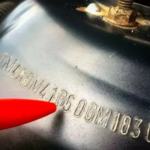The production of silicate white brick is carried out using quartz sand of a certain granulometric composition, with the absence of inclusions of clay particles, lime and various additives. Before molding, the starting composition of the raw material is thoroughly mixed. The formed brick enters autoclave processing, where it is subjected to intensive effects of water vapor with high temperature and high pressure.
This brick, in comparison with ceramic red brick, has not only a different composition of raw materials and manufacturing technology, but also has other physical and mechanical characteristics and the area of application. It is made hollow and full -bodied. The hollow type of silicate brick has less weight and, accordingly, less thermal conductivity, which allows you to build less massive walls. External and internal walls and partitions are being built from it. Its individual types are used to clad the facades of buildings as tiles in the bathroom. For laying the front surfaces of the external walls, one and a half or uniform colored brick, painted throughout volume, is used.
Silicate brick in comparison with ceramic red brick has an advantage of lower cost, with their same strength characteristics. It is almost a third cheaper. This is due to the lower energy cost of its production. It better extinguishes sound waves, which positively affects its soundproofing characteristics. The accurate geometric forms obtained in the production process create an attractive surface of the walls that do not require additional decoration, plastering solutions or other materials.
This type of brick cannot be used in cases of high humidity and the action of high temperatures.






